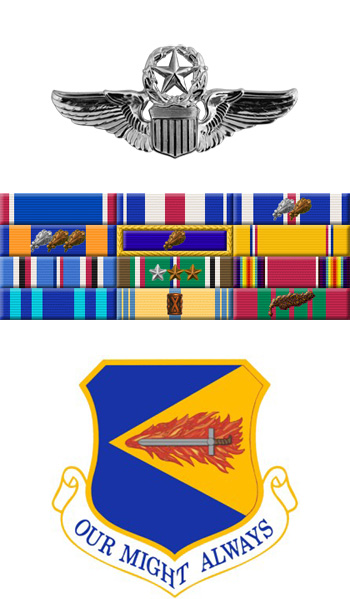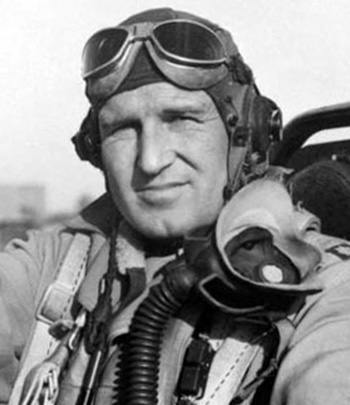
|
Claiborne H. Kinnard, Jr. |
 |
|||
| Rank, Service | ||||
Colonel O-6, U.S. Air Force |
||||
| Veteran of: | ||||
|
||||
| Tribute: | ||||
Clay Kinnard was born on October 29, 1912, in Franklin, Tennessee. He graduated from Vanderbilt University with a Bachelor's Degree in Civil Engineering before entering the Aviation Cadet Program of the U.S. Army Air Corps on October 3, 1938. Kinnard was commissioned a 2d Lt and awarded his pilot wings at Randolph Field, Texas, on August 25, 1939, and then served as an instructor pilot at Randolph until September 1940. Lt Kinnard then served as director of flying at Barksdale Field, Louisiana, from September 1940 to May 1941, at Craig Field, Alabama, from May 1941 to February 1942, at Spence Field, Georgia, from February to May 1942, and at Maxwell Field, Alabama, from May 1942 to May 1943. Maj Kinnard became commander of the 360th Fighter Squadron of the 356th Fighter Group at Manchester, New Hampshire, in May 1943, and went to England with the group in September 1943. He then served as commander of the 354th Fighter Squadron of the 355th Fighter Group from November 1943 to June 1944, and then served with Headquarters 355th Fighter Group from July to September 1944. Col Kinnard was Deputy Commander and then Commander of the 4th Fighter Group from September 1944 to December 1944, and Commander of the 355th Fighter Group from February to May 1945. He left active duty on December 26, 1945, and served in the Air Force Reserve until transferring to the Tennessee Air National Guard in 1953. Clay Kinnard died of a brain tumor on the Air Force's birthday, September 18, 1966. During World War II, Col Kinnard was credited with destroying 8 enemy aircraft in aerial combat plus 1 damaged, and he destroyed 17 more on the ground while strafing enemy airfields. |
||||
|
||||

